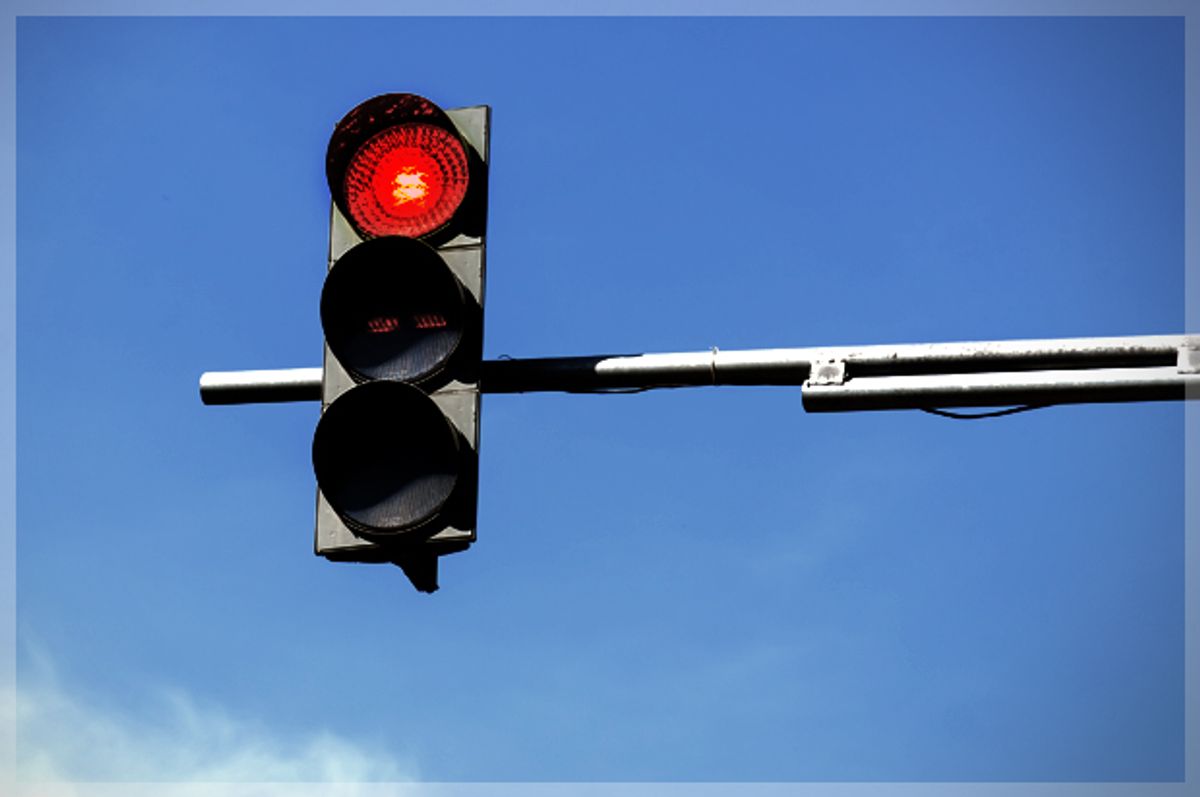As privately operated red-light cameras proliferate across the country, cities and towns shortening yellow lights spike the number of tickets, and thereby increase revenue. The profits come at a social cost, as shorter yellow light times have been associated with an increase in car accidents.
While not new, the profit-driven development continues across the country, with private companies like Redflex Traffic Systems reaping the rewards. In February, the city of Fremont, California, pledged it would refund at least $490,000 in tickets to drivers after it was revealed that for a period of time in 2016, yellow-light times at two key intersections were shorted from 4.7 to 4 seconds, driving an increase in tickets. Each of those intersections was outfitted with red-light cameras run by Redflex Traffic Systems.
According to thenewspaper.com, the slight variation in yellow light time had a tremendous impact. “Increasing the yellow time by 0.7 seconds in 2015 slashed the number of tickets issued at [the intersection of Mowry Avenue and] Farwell Drive by 77 percent, and shortening it back to 4.0 seconds in February 2016 caused a 445 percent spike in ticketing,” states the publication. “At [the intersection of Mowry Avenue and] Blacow Road, the change to a 4.7 second yellow slashed violations by 68 percent. Shortening it back to 4.0 seconds sent violations skyward by 883 percent. In November 2016, the city decided to switch back to the 4.7 second yellow time for undisclosed reasons.”
Fremont is not the only city caught manipulating yellow lights for profit. A Chicago Tribune investigation revealed in 2014 that the Rahm Emanuel administration “quietly issued a new, shorter yellow light standard this spring that generated 77,000 red light camera tickets that would not have been allowed before the rule change.” The change occurred when the city switched from red-light camera company Redflex Traffic Systems to Xerox State and Local Solutions. “Hearing officers were suddenly throwing out hundreds of tickets that showed yellow light times at 2.9, below the 3-second minimum required by the city,” wrote journalist David Kidwell.
Following public outrage, Emanuel was recently forced to triple the yellow-light grace period. But according to James Walker, the executive director of the National Motorists Association Foundation, the problem persists across the country.
“There's something in the order of 400 communities that use red-light cameras,” said Walker. “I would suggest that in virtually all of them, the yellows are set a bit too short. And people don't realize how a few tenths of a second makes a huge difference in violation rates. If you can set yellows about one second too short, you can drastically increase the rate of ticketing and profiting.”
“It's the use of deliberately bad engineering to improve camera profits,” he added. “It's a racket as far as I'm concerned.”
Meanwhile, there is a dearth of evidence that red-light cameras improve public safety. In a 2010 paper by the Texas Transportation Institute, researchers concluded that red light cameras, “May or may not reduce total crashes, but rarely result in a substantial increase.”
A 2014 study commissioned by the Chicago Tribune determined that the city’s red lights “fail to deliver the dramatic safety benefits long claimed by City Hall.”
“Emanuel has credited the cameras for a 47 percent reduction in dangerous right-angle, or ‘T-bone,’ crashes,” note reporters David Kidwell and Alex Richards. “But the Tribune study, which accounted for declining accident rates in recent years as well as other confounding factors, found cameras reduced right-angle crashes that caused injuries by just 15 percent. At the same time, the study calculated a corresponding 22 percent increase in rear-end crashes that caused injuries, illustrating a trade-off between the cameras' costs and benefits.”
According to the Insurance Institute for Highway Safety, “Communities in about half of U.S. states use cameras to catch red light violators. Speed camera programs are less common, but increasing.” The institute states that “Ten states prohibit localities from using red light cameras, speed cameras, or both.”




Shares